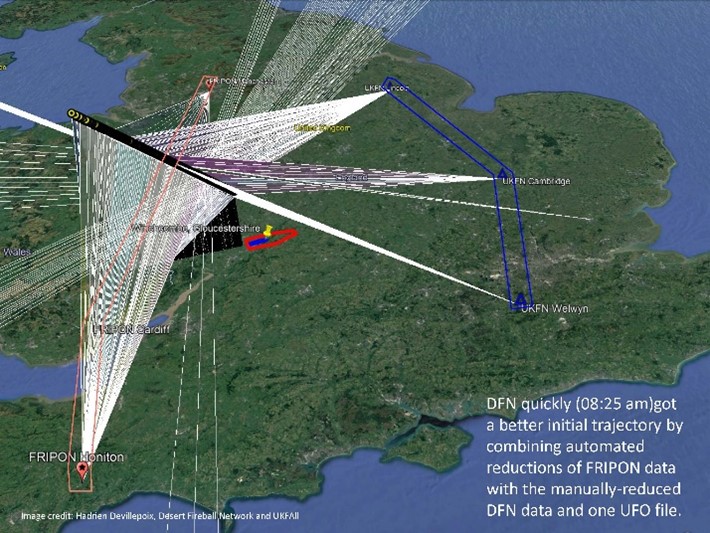Collect Data
To find out where a meteorite has landed, you need to collect observations. While it is possible to use observations reported by individuals and recorded on dashcams and video doorbells, the best data comes from calibrated cameras trained on the sky that are set up with the intent of capturing meteors with a high level of precision. You can set one of these cameras up for as little as NZ$350.
Triangulate
Researchers collate all the available data from all the available sources and use it to plot a path of the object through the atmosphere. While it is not usually possible to capture on camera the place on the terrain where a meteorite lands, with good calibrated data the location can be calculated with reasonable precision.

Search
Assuming the predicted fall of the meteorite is not over the ocean or some other inaccessible location, researchers will conduct a search on site. Most meteorites are not found in a smouldering crater, but are often sitting on the surface, most of their velocity having been stripped away in the passage through the atmosphere. Searchers are looking for a rock that is shiny and dark. Having found one, the area will be searched in case other fragments are scattered nearby. Before removal, the scene will be recorded and measured, and the collected rock will be handled carefully to preserve the integrity of the sample for subsequent study.